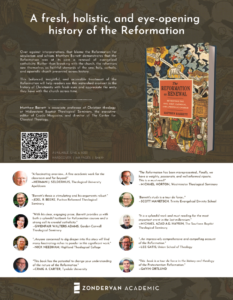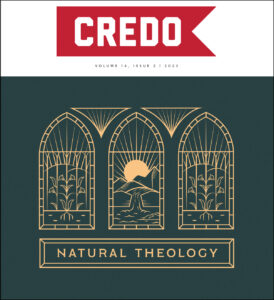 An undisclosed number of years ago, I shared a house with four other young lads while we attended a nearby Bible college. I was the youngest at eighteen years old and the eldest was in his early twenties. One of the stipulations of our staying in the house was that we kept the place in good order. It must have slipped our minds at some point that this included keeping the large lawn around the back mowed and clear of weeds. We were gently reminded of our outdoor responsibilities as the end of the year approached. I remembered with alarm, for the first time in months, that there was a back lawn at all. Unsurprisingly, a cursory inspection revealed that the grass was overgrown and generously mixed with waist high weeds. The total area encompassed by the fences was also much larger than I remembered while moving in all those months ago.
An undisclosed number of years ago, I shared a house with four other young lads while we attended a nearby Bible college. I was the youngest at eighteen years old and the eldest was in his early twenties. One of the stipulations of our staying in the house was that we kept the place in good order. It must have slipped our minds at some point that this included keeping the large lawn around the back mowed and clear of weeds. We were gently reminded of our outdoor responsibilities as the end of the year approached. I remembered with alarm, for the first time in months, that there was a back lawn at all. Unsurprisingly, a cursory inspection revealed that the grass was overgrown and generously mixed with waist high weeds. The total area encompassed by the fences was also much larger than I remembered while moving in all those months ago.
After donning a pair of faded pink gardening gloves discovered under the kitchen sink, I marched out there one morning determined to make a start on what I hoped would be a major offensive against the jungle we had allowed to develop on our watch. Presumably to affect innocence a few of the taller and thicker weeds had the audacity to produce white and pink flowers at some point in the year. Stooping down I grabbed a vulnerable looking character and gave it a sharp tug close to the ground. The entire garden seemed to shiver from one end to the other. After some probing I realized with dawning horror that what appeared to be isolated invaders was a single dizzying network of bindweed. These ground-level vines would resist my efforts at every turn from one end of the jungle to the other.
Grappling with the fifth way of Thomas Aquinas is something like that. It would be naïve to think Aquinas’s fifth way is an unassuming argument from design carefully isolated from anything else. Before long one cannot fail to notice the connection to other hidden rebel bases with daunting names like “hylomorphism,” “act and potency,” and “fourfold causation.”
Untangling the Weeds
It would be naïve to think Aquinas's fifth way is an unassuming argument from design carefully isolated from anything else. Share on X Thomas Aquinas’s fifth way (Summa Theologiae I.2.3) is an argument for God’s existence that proceeds from the order and subsequent intelligibility of the world around the human observer. He argues that the natural order must ultimately depend upon, or reflect, or participate in, some order-conveying power beyond it. There are everyday things evident to the senses which exhibit natural regularity or rhythms without possessing intelligence. Plants in the garden routinely grow larger and spread when left unchecked. From this Thomas reasons that, “whatever lacks intelligence cannot move towards an end, unless it be directed by some being endowed with knowledge and intelligence; as the arrow is shot to its mark by the archer.”[1] Thomas attributes this regularity in natural processes and properties to the providential care of the Creator which he compares to “the domestic foresight by which a man rules his family, or to the political foresight by which a ruler governs a city or a kingdom, and directs the acts of others to a definite end.”[2] Importantly, the order found in the features of the natural world is a function of their directedness towards an end or goal. The invocation of final causation leads many to refer to the fifth way as a design argument where design is understood as purpose.
Modern readers often assume Thomas’s fifth way to be akin to Paley’s design argument. However, the two operate upon a different understanding of causation. Share on XModern readers familiar with apologetics often consider Thomas’s fifth way to be akin to Paley’s design argument. However, the two operate upon a different understanding of causation and reveal equally different conceptions of creation and its Creator. Understanding this difference requires some tracing of the bindweed through the grass.
Within the Scholastic tradition it is maintained that change is the movement from potentiality to act and that all created things are mixtures of both act and potency. Hylomorphism is the jargon for this arrangement if the need to appear intelligent arises. In order to understand a thing, one of these mixtures of act and potency, four causes must be considered. The four causes are the famous material, formal, efficient and final causes. The material cause, which corresponds to potency, is the stuff out of which a thing is made. The formal cause is the essence, or nature, of a thing which brings an actualizing pattern to bear on the material potential. The efficient cause is the means by which the thing is changed through a transfer from potential to actual by something already actual. Final causation is the purpose or “that for the sake of which” that thing exists.
A Mechanical Lack of Purpose
Now, modern metaphysics, by way of contrast, can be characterized as mechanistic. This means formal and final causation are either casually overlooked or explicitly rejected as illegitimate leaving only material and efficient causes behind. Hence the mechanical descriptor. There are no substantial forms in nature which provide organizing patterns or essences, neither is there any purpose or direction from final causation. Things just happen says the modern mechanist. Do not ask silly questions.
Things just happen says the modern mechanist. Do not ask silly questions. Share on X Paley’s argument assumes this latter mechanistic view when it considers creation but reintroduces telos and form through the extrinsic operations of a divine inventor on things that would otherwise not take the form that they do under his ministrations. The form in this case is accidental rather than substantial which confuses nature with art. The distinction between art and nature is not unimportant in a Scholastic framework.[3]
In Paley’s famous analogy the world is likened to an intricate and complicated artifact such as a pocket watch. It is argued that the order and complexity seen in the natural world alludes to an artisan of some sort. A watchmaker, or watchmakers, of immense power and intelligence must have manufactured the cosmos or at least the part the observer inhabits.
Underlying Paley’s argument is the assumption that the world is composed of previously undetermined and unintelligible parts. The cogs, springs, and glass that comprise a watch will not take the form of a watch until telos is introduced from without by the inventor during the manufacturing process. The atheists’ rejoinder to Paley is that there are patterns native to the natural world such that a telos imparting creator becomes superfluous and the two sides become locked in an explanatory stalemate. This same dichotomy endures. Contemporary versions of Paley’s design argument are often described under the moniker of “Intelligent Design” whose adherents deploy examples of “irreducible” or “specified” complexity as evidence for a God hypothesis. Modern atheists reject these as “God of the gaps” type arguments.
Telos as Explained by Thomas Aquinas
Thomas believes, following Aristotle, that just as matter could not exist without form neither could efficient causes exist without finality or directedness. Share on X Thomas’s teleological argument, by contrast, avoids this cul-de-sac by suggesting that there are immanent forms, or natures, or inclinations in created things. These immanent formal-come-final causes are ultimately the work of God who sustains creation continually in His concurrent providence (Gen. 8:22, Ps. 104:19, 27-29, 148:8, Prov. 16:33, Matt. 10:29-30, Col. 1:17, Heb. 1:3). Unlike Paley, Thomas’s fifth way turns on a metaphysics of finality rather than on particular examples of complexity which currently lack a satisfactory scientific explanation. The fifth way does not depend on an observation of designed looking things. Instead Thomas argues that something behind the scenes is being done or provided to things, even quite simple things, that do not possess native intentional agency that makes them behave in routine ways.
Thomas’s metaphysic of finality is an expression of the Scholastic understanding of causation briefly considered above. Thomas believes, following Aristotle, that just as matter could not exist without form neither could efficient causes exist without finality or directedness. It is for this reason that Thomas refers to final causation as, “the cause of the other causes. It is clear that the agent acts for the sake of the end.”[4] What does he mean by this? Fundamentally, the distinction and link between act and potency, the Scholastic account of change, is only possible due to finality. An efficient cause moves a thing from potential to actual but potentials are always for, or pointed towards, something else.[5] Things in potency can change, but they cannot change into anything. Rather, their potentiality is guided by their formal, efficient, and final causes. Those other conditions or states are furnished and determined by finality. Without finality there is no ordering tendency, or directedness, or inclination, by which one could claim that this tame looking lawn could become a villainous wilderness if neglected and left to its own devices.
In other words, an overgrown garden must be within the set parameters of the possible, miracles notwithstanding, to be a potential. Until there is potential nothing can be transferred to actual. The potencies are seated in finality. In this way final causation must precede efficient causation and efficient causation is not conceivable without finality.
The wilderness in the back garden comes into being last, temporally, but the potential is causally prior. Likewise, a coin toss can result in heads or tails only if heads or tails are the potential outcomes ahead of time rather than, say, green or blue or some other binary. Finality provides both this range of possibilities and, in so doing, gives direction to the subsequent causes. Thereby, final causation is considered the cause of the causes and is a cornerstone of Thomas’s metaphysics.[6]
Possible Objections
To head-off possible questions or objections what follows are some things that could not fairly be said of the fifth way. First, finality is not limited to a question of function. The fifth way, and final causation more broadly, is often described in terms of biological functions. The eye is for seeing and the heart is for pumping blood. These statements are true and apt common-sense examples of the finality principle. However, the fifth way invokes the directedness found in anything with a regular set of potencies where the directedness of those potencies are a precondition of regularity found in any cause and effect relation.[7] Mixing purple and yellow paint routinely produces brown paint rather than green or pink or the hum of a lightsaber.
Second, the regularities that are a function of final causation could not be attributed to chance. “Chance is simply our way of referring to a situation in which independently operating causes intersect or collide without any of the particular agents foreseeing that this will happen.”[8] Chance is, then, merely a description and not vested with any causal power. This can be illustrated by noting the impropriety of blaming bad weather on the weatherman’s predictions. A meteorologist’s statistical model only results in probable descriptions and is not causally intertwined with any real outcome.
Chance is, then, merely a description and not vested with any causal power. Share on X Indeed, the possibility of making predictions, as a weatherman does, is only possible if there are a regular set of outcomes that routinely or typically follow on from certain observed atmospheric conditions. In the opening verses of Matthew 16, Jesus scolds the Pharisees and Sadducees who ask for a sign from heaven. Jesus responds to them by contrasting their ability to soundly predict the weather, based on the color of the sky at night or in the morning, with their inability to soundly discern the signs of the times. That nature exhibits rhythm without native intelligence is the crux of the fifth way.
Third, Thomas is not attributing consciousness or intentionality to natural processes when invoking final causation. Thomas explains that, “although every agent, both natural and voluntary, intends an end, still it does not follow that every agent knows the end or deliberates about the end.”[9] Thomas employs terms such as “intends”, “tendency” and “inclination” but does not suggest that the grass, for example, is aware of its inclination to grow to unseemly heights. Nor do the grass and weeds conspire together and purpose to grow uncontrollably and irritate the residents.
God providentially maintains order in created things that do not possess intelligence natively.[10] The natural phenomena in question need not be particularly complex such as in the popular cases of the eye, the liver, the bacterial flagellum or a single strand of DNA. The complexity in these things is remarkable, but for Aquinas’ fifth way to work all that is needed is any instance of regular behavior in a natural thing. As soon as there is routine behavior there must, says Thomas, be an orchestrated end or a telos inherent in natural things as their substantial forms.[11]
There are a handful of reasons why Thomas’s metaphysic of finality should be preferred to the mechanistic one assumed by Paley and in other modernist design arguments. First, if natural objects do not possess any inherent, potency defining, teleology then they cannot be regarded as combinations of act and potency. Without act and potency inherent in natural objects it could not be argued that God is their purely actual cause.
What exactly is being defended by Paley and intelligent design if it is not that which nothing greater can be conceived? Share on XSecond, final causation underwrites the other causes. Efficient causation, which is essential to human understanding of the natural world, depends upon final causation to be intelligible. Without it so-called laws of nature become brute facts that beg the question against the principle of sufficient reason.
Third, if, in principle, the world operates like a machine, with telos extrinsically imposed upon material causes that do not possess that telos immanently, it could conceivably carry on without God as many man-made machines do. Scripture paints a picture of a world that is both created and maintained in existence continually by the second person of the trinity (John 1:1-3, 10, Colossians 1:17, Hebrews 1:2-3).
Fourth, the creator to which the Paley and Intelligent Design arguments point is not necessarily the sort of God who announces Himself in Exodus as “I AM.” There is no reason why Paley’s arguments could not work towards a Zeus, or some other powerful alien being, whose existence could be described in univocal terms with our own. A being that exists alongside the creation like that cannot really be “I AM.” Which leads to the question of what exactly is being defended by Paley and intelligent design if it is not that which nothing greater can be conceived?
Endnotes
[1] Aquinas, ST I.2.3.
[2] Aquinas, De Veritate 5.2.
[3] Ralph McInerny, A First Glance at St. Thomas Aquinas: A Handbook for Peeping Thomists (Notre Dame, IN: Notre Dame University Press, 1990), 75.
[4] Aquinas, Commentary on Aristotle’s Physics II.5.186.
[5] Edward Feser, Scholastic Metaphysics: A Contemporary Introduction (Piscataway NJ: Transaction Books, 2014), 100.
[6] Edward Feser, Aquinas: A Beginners Guide, (London: Oneworld Publications, 2009), 19.
[7] Ibid., 18.
[8] John F. Wippel, The Metaphysical Thought of Thomas Aquinas: From Finite Being to Uncreated Being, (Washington DC: Catholic University Press, 2000), 483.
[9] Aquinas, De Principiis Naturae 3.19.
[10] John F. Wippel, The Metaphysical Thought of Thomas Aquinas: From Finite Being to Uncreated Being, (Washington DC: Catholic University Press, 2000), 480.
[11] Edward Feser, “Teleology: A Shopper’s Guide,” Philosophia Christi 12, no.1 (Spring 2010): 156.


